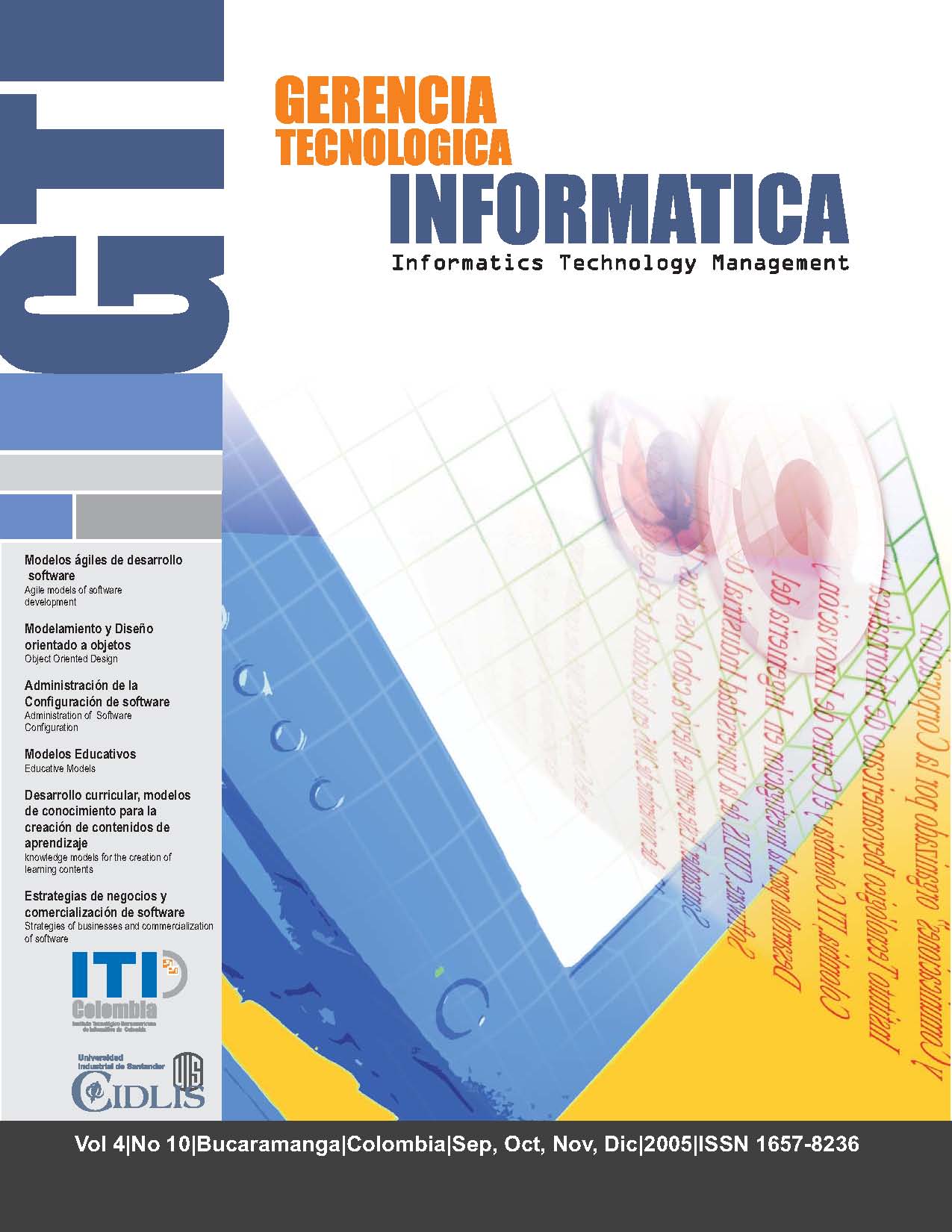Publicado 2011-04-14
Cómo citar
Resumen
RESUMEN
El propósito de este trabajo de investigación es mostrar el proceso de diseño e implementación de cursos virtuales de aprendizaje basados en LTSAy las especificaciones IMS LEARNING DESIGN e IMS-CONTENT PACKAGING, como estrategia clave para la construcción de escenarios virtuales de aprendizaje que se caractericen por ser reusables, de fácil mantenimiento y tengan aproximaciones reales para ser integrados con otros tipos de sistemas de la misma categoría, es decir, sean interoperables, además, estén fundamentados en estructuras curriculares que propendan por el desarrollo de cursos que se caractericen por ser: didácticos, interactivo, colaborativo y centrado en el aprendizaje del alumno. El proceso de diseño de cursos virtuales de aprendizaje se inicia a partir de la caracterización de los estudiantes, y de las necesidades de los docentes. El diseño define los elementos relevantes que son necesarios para una interfaz y navegación apropiada. El proceso de implementación incluye el mapeo de los estándares educativos a la estructura curricular de los cursos virtuales, además, se utiliza XSLT para transformar el manifiesto, DOM y PHPpara programar el árbol de contenidos. La evaluación del curso piloto permitió mejorarlo desde el punto de vista funcional, de interfaz y metodológico. Los logros más relevantes de este trabajo son el interés de los docentes hacia el diseño de cursos virtuales, y la definición de un plan institucional para la implementación de una política de incorporación de las TICs a procesos educativos.
PALABRAS CLAVES
Estándares Educativos
LTSA
IMS LEARNING DESIGN
IMS CONTENT PACKAGING
Cursos Virtuales
ABSTRACT
The purpose of this research is to examine the process of design and implementation of virtual courses based on LTSA and the technical characteristics of IMS Learning Design and IMS-Content Packaging, as a key strategy for the development of virtual learning scenarios characterized by being reusable, easy maintenance and with approaches realistic so as to be integrated into other types of systems within the same category, that is to say, interoperative as well as based on curricular structures intended for the development of courses characterized by being: didactic, interactive, cooperative and student centered. The process of designing virtual courses is initiated on recognizing students and teachers needs. Design should specify the elements relevant for appropiate interface and navigation. The process of implementation includes mapping of educational standards to the curricular structure of virtual courses. XSLT is also used to transform the manifesto, DOM and PHP to program the tree of contents. The evaluation of the pilot course allowed an improvement on methodological, interface and fuctional areas. The most relevant achievements in this work are the teachers interest towards the design of virtual courses and the statement of an institutional plan for a policy of inclusion of TICs into educational processes.
KEYWORDS
Educational standards
LTSA
IMS LEARNING DESIGN
IMS CONTENT PACKAGING
Virtual Courses
Descargas
Referencias
- Bloom, B. Taxonomy of Educational Objetives: the classifications of educational goals. New York: David Mckay, 1956. 42
- Farance, F. LTSA Specification - Learning Technology System Architecture, 1999.
- Felder, R. Reaching the Second Tier Learning and Teaching Styles in College Science Education. Journal of College Science Teaching, 1993.
- EML, Educational Modelling Language, Open University of Netherlands, 2001.
- IMS Content Packaging Information Model. Version 1.1.1 Update Specification. /2001.
- IMSCP_BIND. IMS Content Packaging XML Building Version 1.1.2 Final Specification, IMS Global Learning Consortium, Inc, 2001.
- IMSCP_BIND. IMS Learning design XML Building Version 1.0 Final Specification, IMS Global Learning Consortium, Inc. 2003
- IMSCP_INFO. IMS Content Packaging Information Model Version 1.1.2 Final Specification, IMS Global Learning Consortium, Inc, 2001.
- IMS LD_BEST, IMS Learning Design Best Practice Guide, Version 1.0
- Keefe, J. Learning style: An overview. In NASSP's Student learning styles: Diagnosing and prescribing programs. Reston, VA: National Association of Secondary School Principals, 1979, pp. 1-17.
- Thuring, M Hypermedia and cognition: designing for efecctive human- computer interaction. Segunda edición. Addison Wesley, 1992.
